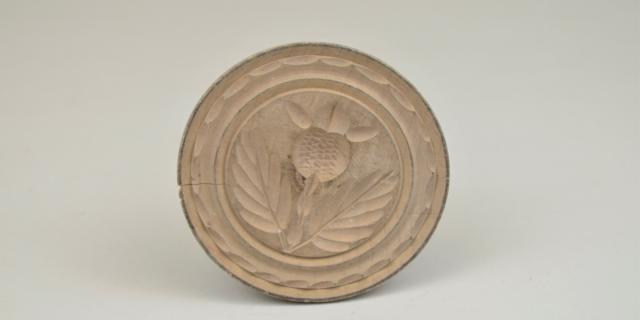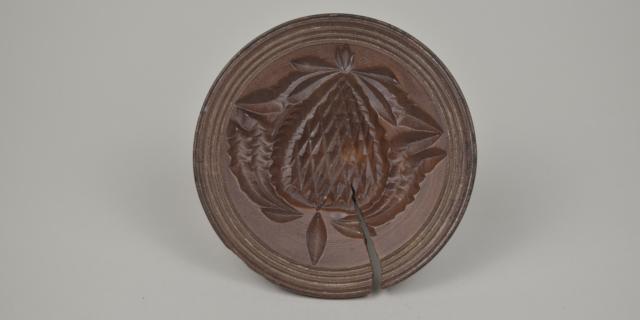
In 19th-century North America, butter molds and presses conveyed changes in rural women’s participation in local economies while introducing a consumer economy into rural areas. Women were responsible for milking the cows. After sitting out, the cream was skimmed off of the milk and added to a butter churn which would circulate the cream, thickening it until it separated into butter and buttermilk. The butter would then be rinsed and shaped with paddles before being pressed or molded. Presses and molds were crafted by farmers using soft, moisture resistant wood like pine or maple that would be hand-turned and carved into unique designs. Improvements in transportation and available resources allowed farm women to sell the surplus butter they churned in return for additional income. When sold at market, the unique stamp functioned as a brand, marking products sold by skilled makers as more desirable than others. Income from butter sales was often enough for rural families to afford other commodities thus participating in the economic cycle.
These objects are representative of some of the many hand-turned wooden artifacts that can be found in the MacLachlan Woodworking Museum's collection. Studying them can help us understand different woodworking techniques and give us insight to how an everyday object can play an integral role in dairy farming of the past.












